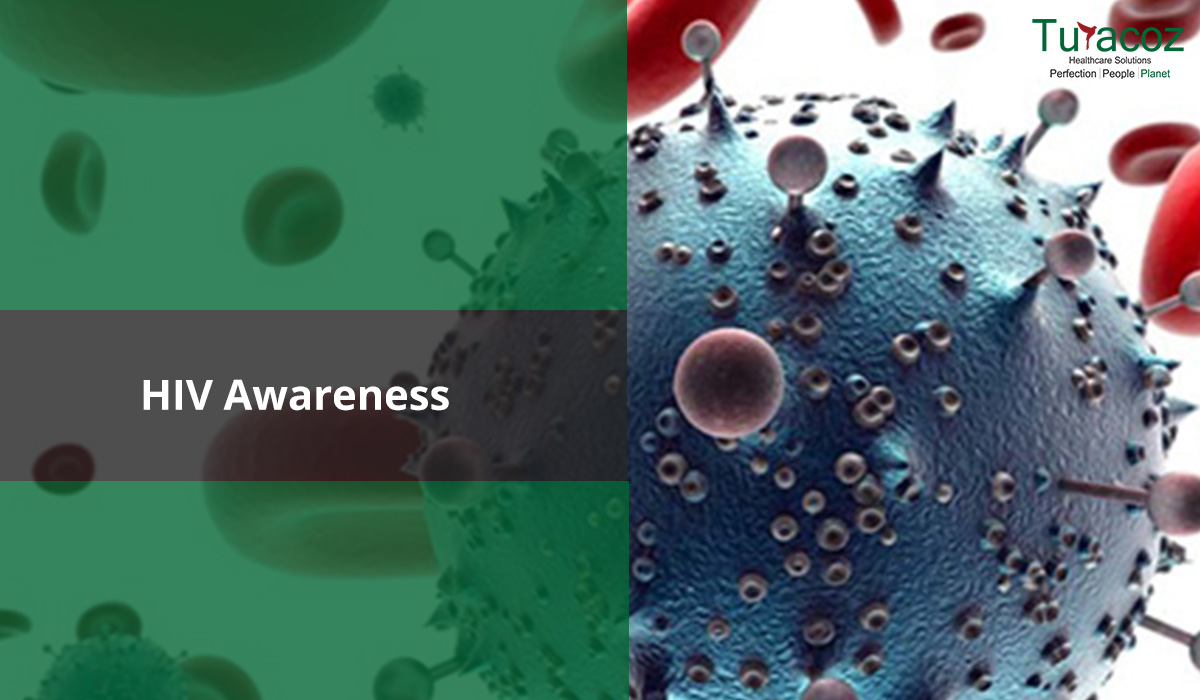The human immunodeficiency virus (HIV) invades the immune system and damages the host’s defense system and causes it to weaken against all kinds of minor and significant infections and cancers. Thus, gradually leading to immunodeficiency, which in turn makes the body susceptible to opportunistic infections. CD4 cell count typically measures immune function. As stated by global statistics about 37.9 million people were HIV infected in 2018, with a prevalence of 0.8% in adults.
The advancement to a stage of acquired immunodeficiency syndrome (AIDS), takes 2 to 15 years to occur if not treated, depending on the individual.
Signs and symptoms
The symptoms of HIV depend on the stage of infection. It’s noteworthy that people with HIV infection are highly contagious during the initial period. However, most individuals aren’t aware of this until the later stages. People may experience no symptoms or influenza-like illnesses, including headache, rash, fever, and sore throat. The progressing illness leads to advanced symptoms and signs, like diarrhea, fever, cough, without treatment; tuberculosis (TB), cryptococcal meningitis, severe bacterial infections, swollen lymph nodes, weight loss, and cancers such as lymphomas and Kaposi’s sarcoma.
Transmission
Transmission of this dreadful disease occurs through the exchange of a variety of bodily fluids such as blood, breast milk, semen, and vaginal secretions from infected people, and from a mother to her child during pregnancy and delivery. Individuals cannot become infected through regular day-to-day contacts such as kissing, hugging, shaking hands, or sharing personal objects, food, or water.
Risk factors
Behaviors and conditions that put individuals at higher risk of contracting HIV include:
- Unprotected anal or vaginal sex
- Drug abuse
- Sexually transmitted infections (STI) like syphilis, gonorrhea, bacterial vaginosis, herpes, and chlamydia
- Use of contaminated needles, syringes, and other injecting equipment and drug solutions when injecting drugs
- Unsafe blood transfusions, injections, using contaminated and unsterilized needles, and tissue transplantation
- Experiencing accidental needle stick injuries, including among health workers
Diagnosis
HIV diagnosis is made through rapid diagnostic tests that provide same-day results. These tests dramatically facilitate early diagnosis and treatment. There are self-diagnostic tests available to help test for HIV infection; however, a confirmatory test is always required, conducted by a qualified and validated health worker at a community center or clinic. The WHO pre-qualified tests are the most accurate for diagnosing HIV infection. These tests detect the antibodies produced from the infected individual. People develop antibodies within 28 days of infection. This period is called window period, during which a person does not experience any symptoms; however, he/she might transmit the disease to others.
All the HIV positive patients should be retested before enrolling for the prescribed treatment, to rule out any testing or reporting error.
While testing for babies born to HIV-positive mothers, the virology test is the test of choice and should be performed at birth or 6 weeks of age. New technologies are being available to help perform these tests more accurately along with delivering the results on same day.
HIV testing services
HIV testing should be voluntary and the right to decline testing should be recognized. Mandatory or coerced testing by a health care provider or authority, or by a partner or family member is not acceptable as it undermines good public health practice and infringes on human rights.
All HIV testing services must follow the WHO-recommended principles known as the “5 Cs”:
- Informed consent
- Confidentiality
- Counseling
- Correct test results
Connection (linkage to care, treatment and other services)
Prevention
Individuals can reduce the risk of HIV infection by limiting exposure to risk factors. Key approaches for HIV prevention, which are often used in combination, are listed below.
- Male and female condom use
- Testing and counseling for HIV and STIs
- Testing for HIV and other STIs
- Testing and counseling, linkages to tuberculosis (TB) care
- Voluntary medical male circumcision (VMMC)
Prevention benefits of ART
WHO based on the results of a study conducted in 2011 recommended that all the HIV infected individuals should receive ART to prevent the transmission of this deadly condition. Also, a study conducted in 2019 reported negligible transmission risk of HIV in individuals on ART.
Pre-exposure prophylaxis (PrEP) for HIV-negative partner
Pre-exposure prophylaxis is recommended for all the individuals who are at a greater risk of HIV infection such as, trans-genders, hetero and homosexual couples, drug abusers, pregnant and lactating women.
Post-exposure prophylaxis for HIV (PEP)
Post-exposure prophylaxis should be used within seventy-two hours of being exposed to HIV. This includes testing, counseling, treatment with anti-retroviral for 28 days.
Harm reduction for people who inject and use drugs
Individuals who use the injections can follow the below-mentioned interventions as prevention:
- needle and syringe programs
- opioid substitution therapy for people dependent on opioids, and other evidence-based drug dependence treatment
- risk-reduction information and education, and provision of naloxone to prevent opioid overdose
Elimination of mother-to-child transmission of HIV
HIV infection can be transmitted to the child or the unborn fetus through the mother during pregnancy or breastfeeding. This is called a vertical mother to child transmission (MTCT). However, this can be prevented with the treatment using antiretroviral therapy during pregnancy and breastfeeding.
Treatment
Treatment comprises of combination therapy with three or more anti-retroviral drugs. This therapy helps suppress the condition and does not completely cure it. Hence WHO recommends all the individuals suffering from HIV to take lifelong medication to lead a normal life.
The clinical research and health care system is continuously working to develop ARTs with better efficacy, tolerability. Use of dolutegravir-based or low-dose efavirenz for first-line therapy, and raltegravir and darunavir/ritonavir for second line as recommended by WHO.
Making the access to the treatment and prevention is the core goal for the upcoming year. And this aims to bring the world back on track to end the AIDS epidemic by 2030.
WHO response
The 69th World Health Assembly recommended a new “Global health sector strategy on HIV for 2016–2021”. The strategy comprises of five strategic directions that guide the countries and WHO to take necessary actions over six years.
The strategic directions are:
- Information for concentrated action for the region/country
- Interventions designed to have an impact on the variety of services needed
- Delivering services equally to cover the population in need
- Financing for the sustainability of the services in terms of cost
- Innovation in acceleration towards future
WHO is a co-sponsor of the Joint United Nations Programme on AIDS (UNAIDS). Where it directs the activities on HIV treatment and care and the coinfection. It also jointly organizes with UNICEF, the work on elimination of MTCT of HIV.
Prevention is always better than cure! Follow these tips to notice a change in your lifestyle.
Turacoz Healthcare Solutions aims to spread awareness about HIV/AIDS. We urge the people to be aware about the condition. Following the preventive measures and seeking counseling is the best way to avoid this condition. However, for the HIV infected individuals it is best to continue with the ART and maintain a healthy diet. Nevertheless, with love and support from family and friends they can lead a happy and long life.
If you wish to contact us, click here.






























